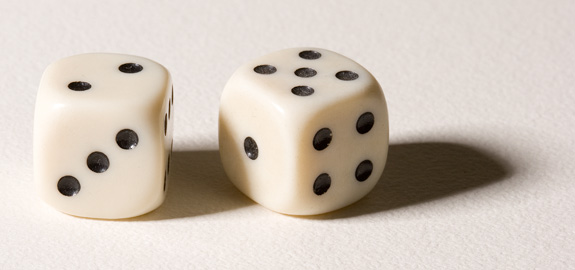First and easiest is to make sure you and your students are aware of the Usage Rights tool in a Google Image search. By clicking on the "tools" button after doing a search, you will open a secondary menu that includes "Usage Rights" (in addition to other helpful limiters like size, color and type). You can then filter all image results with the tag that meets your needs ("noncommercial reuse" is the broadest license category and would cover situations like inclusion in a presentation for a class).
There are also a number of searchable alternatives that aggregate images that are available for free re-use under Creative Commons licensing. Several of these (Unsplash, Pixabay, Search Creative Commons) are linked on the Homestead Library website, and many more are listed here (from FreeTech4Teachers).
Finally, no matter where you find your images, you should provide as much credit as available. You might include licensing information:

"Dice" by jfh686 is licensed under CC BY 2.0 https://docs.google.com/document/d/10U4JxMPYVBgVgtghkt-sYD4sDBJjZAp_BzQQLsMUdN8/edit
Or you might provide a full citation:

Abejaobrera. Pineapples for sale in Bolgatanga, Upper East Region, Ghana. Wikimedia Commons. 23 June 2011. https://commons.wikimedia.org/wiki/File:Pineapples_for_sale_in_Bolgatanga,_Upper_East_Region,_Ghana.JPG
Here’s the specific information you’ll need to locate when citing an image you found on Google Images:
- Full name of the image’s creator, such as the name of the photographer or illustrator (if available)
- Formal title of the image (if available) or a description of the image
- Name of the website where the image lives (Do not use Google as the name of the website!)
- Publisher of the website where the image was found on
- Date this information was published on their site
- The URL
No comments:
Post a Comment